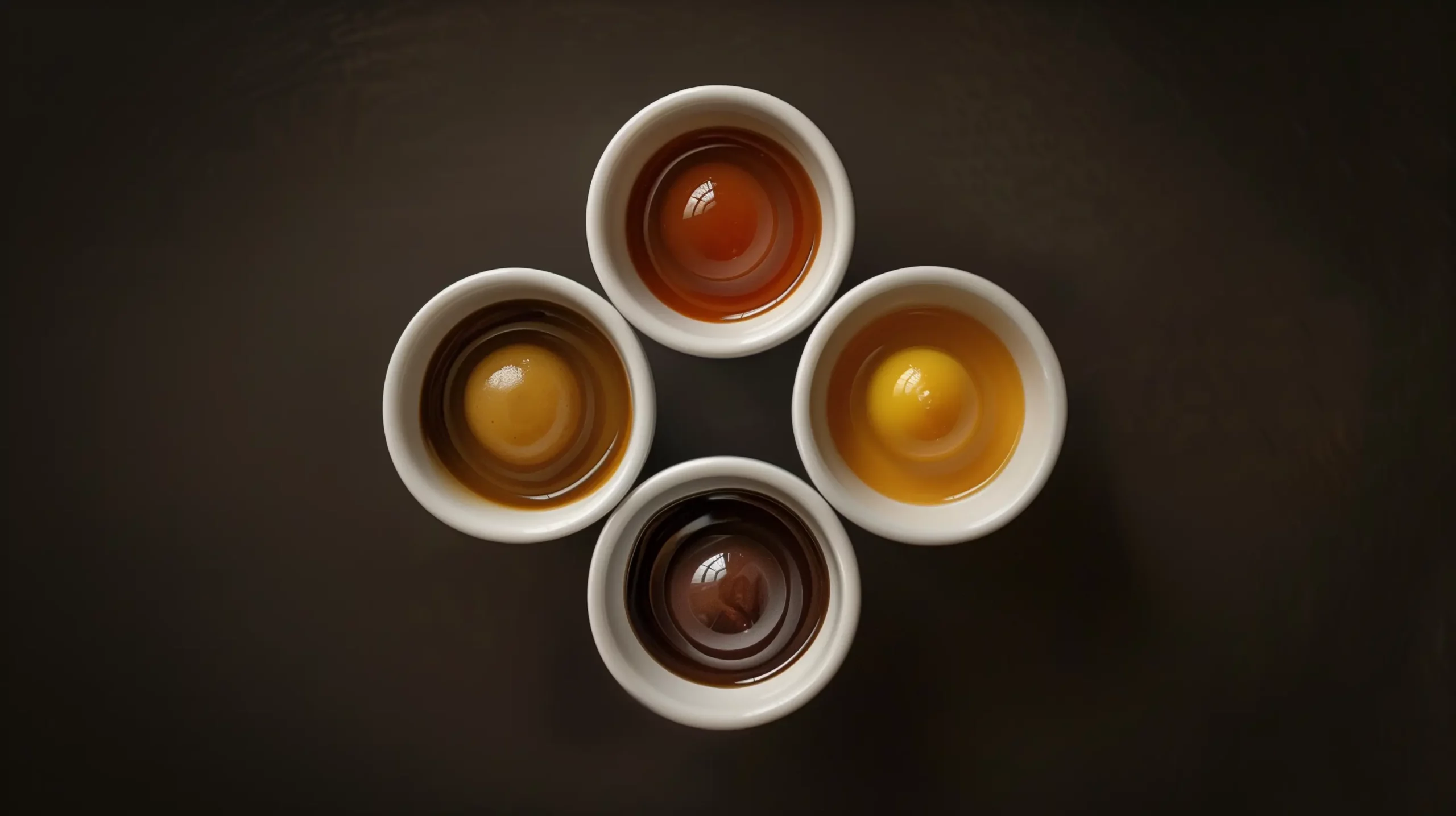Caramel colour is a versatile food additive that lends a rich, warm tone to a wide array of products. Derived from the controlled heating of carbohydrates, this natural colourant offers a spectrum of hues, from light amber to deep brown. Let’s delve into the science behind caramel colour, explore its different types, and understand its applications in the food industry.
Understanding Caramel Colour
Caramel colour is produced through a process known as caramelisation. This involves heating carbohydrates, such as sucrose, glucose, or fructose, under controlled conditions. The reaction results in a complex mixture of compounds that contribute to the colour, flavour, and functional properties of the final product.
Types of Caramel Colour
The four primary types of caramel colour, classified based on their production methods, are:
- Class I (E150a): Plain or Caustic Caramel: Created by heating carbohydrates with acids, bases, or salts (excluding ammonium and sulphite compounds). Offers a range of colours and is known for its alcohol solubility.
- Class II (E150b): Caustic Sulphite Caramel: Produced by heating carbohydrates with sulphite compounds. Known for its subtle yellow hue and stability in acidic environments and tannins.
- Class III (E150c): Ammonia Caramel: Created using ammonium compounds, resulting in a deep red-brown colour and stability in the presence of proteins and salts.
- Class IV (E150d): Sulphite Ammonia Caramel: Produced with both ammonium and sulphite compounds, offering a dark brown colour and excellent acid stability.
The Chemistry Behind Caramel Colour- The Production Process
The production of caramel colour involves a careful balance of heat, time, and specific additives. The process generally includes:
- Carbohydrate selection: Choosing the appropriate carbohydrate source (e.g., glucose, sucrose, fructose) based on the desired caramel colour type.
- Heating and caramelisation: The carbohydrate is heated to specific temperatures under controlled conditions to achieve the desired colour and flavour profile.
- Filtration and Storage: The caramelised, liquid product is filtered to remove impurities and stored in stainless steel tanks for further processing or packaging.
- Transformation & Packaging: The caramel colour can be either packaged directly as a liquid for ease of use or transformed into a convenient powder through spray drying. Both the liquid and powder forms are then packaged according to your needs.
Applications of Caramel Colour
Caramel colour is widely used in the food and beverage industry to enhance the appearance and overall sensory experience of products. Some common applications include:
- Alcoholic Beverages: Caramel colour plays a crucial role in the production of whiskey, brandy, rum, and other spirits.It imparts the characteristic amber hues associated with these beverages, while also contributing to their depth of flavour and complexity.
- Soft Drinks and Juices: From the classic brown colas to vibrant fruit-flavoured beverages, caramel colour adds visual appeal and sometimes enhances flavour profiles. It can also help to standardise colour across different batches.
- Baked Goods: Golden brown breads, cakes, cookies, and pastries owe their beautiful colour in part to caramel colour. In some cases, it can also add a subtle touch of caramel sweetness or enhance browning reactions during baking.
- Confectionery: The world of candies, chocolates, and caramel-flavoured products relies heavily on caramel colour. It creates a vast spectrum of colours, from vibrant yellows to deep browns, allowing manufacturers to bring their confectionery creations to life.
- Sauces and Gravies: Caramel colour adds depth of colour and flavour to a variety of sauces and gravies. It can help to achieve a rich, caramelised appearance and sometimes even contribute a hint of caramel sweetness or bitterness,depending on the type of caramel colour used.
- Other Food Products: Caramel colour finds its way into a wide range of other food products, including ice cream,yogurt, pet food, and even certain pharmaceutical products like liquid orals and supplements. It plays a vital role in enhancing visual appeal and, in some cases, taste profiles.
Alvin Caramel Colours: A Commitment to Quality
From the amber depths of classic cola to the golden allure of baked goods, our caramel colours enhance both the visual and sensory experience. Its versatility extends across various food categories, including beverages, confectionery, baked goods, and savoury products.
As consumers become increasingly discerning about the ingredients they consume, the natural origin and wide range of applications of our caramel colours make it a preferred choice for food manufacturers seeking to create products that are both appealing and wholesome.
Alvin Caramel Colours is dedicated to providing high-quality caramel colour solutions that meet the diverse needs of the food and beverage industry. With a commitment to quality, safety, and innovation, we strive to be your trusted partner in manufacturing exceptional products.

